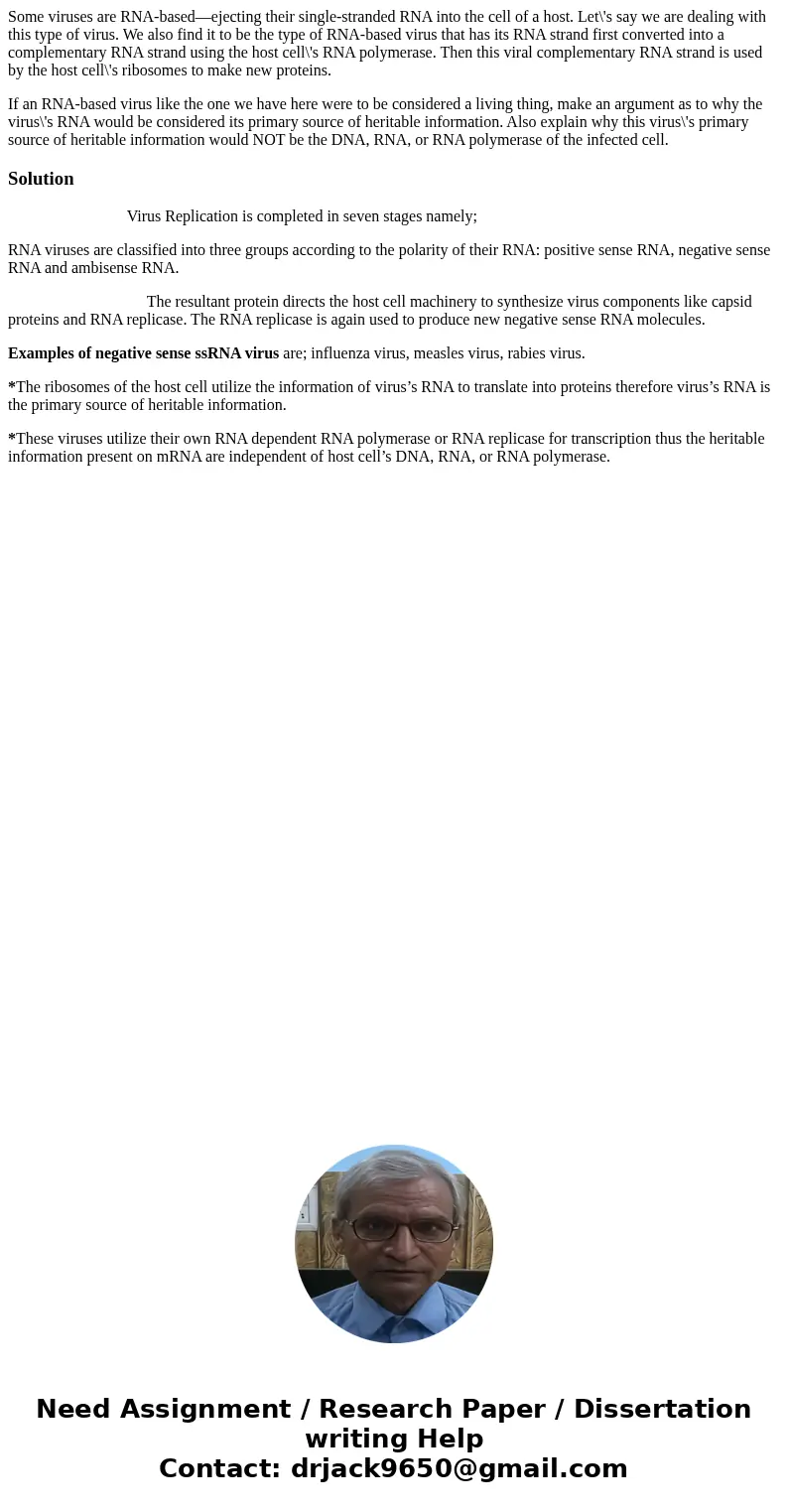Some viruses are RNAbasedejecting their singlestranded RNA i
Some viruses are RNA-based—ejecting their single-stranded RNA into the cell of a host. Let\'s say we are dealing with this type of virus. We also find it to be the type of RNA-based virus that has its RNA strand first converted into a complementary RNA strand using the host cell\'s RNA polymerase. Then this viral complementary RNA strand is used by the host cell\'s ribosomes to make new proteins.
If an RNA-based virus like the one we have here were to be considered a living thing, make an argument as to why the virus\'s RNA would be considered its primary source of heritable information. Also explain why this virus\'s primary source of heritable information would NOT be the DNA, RNA, or RNA polymerase of the infected cell.
Solution
Virus Replication is completed in seven stages namely;
RNA viruses are classified into three groups according to the polarity of their RNA: positive sense RNA, negative sense RNA and ambisense RNA.
The resultant protein directs the host cell machinery to synthesize virus components like capsid proteins and RNA replicase. The RNA replicase is again used to produce new negative sense RNA molecules.
Examples of negative sense ssRNA virus are; influenza virus, measles virus, rabies virus.
*The ribosomes of the host cell utilize the information of virus’s RNA to translate into proteins therefore virus’s RNA is the primary source of heritable information.
*These viruses utilize their own RNA dependent RNA polymerase or RNA replicase for transcription thus the heritable information present on mRNA are independent of host cell’s DNA, RNA, or RNA polymerase.

 Homework Sourse
Homework Sourse